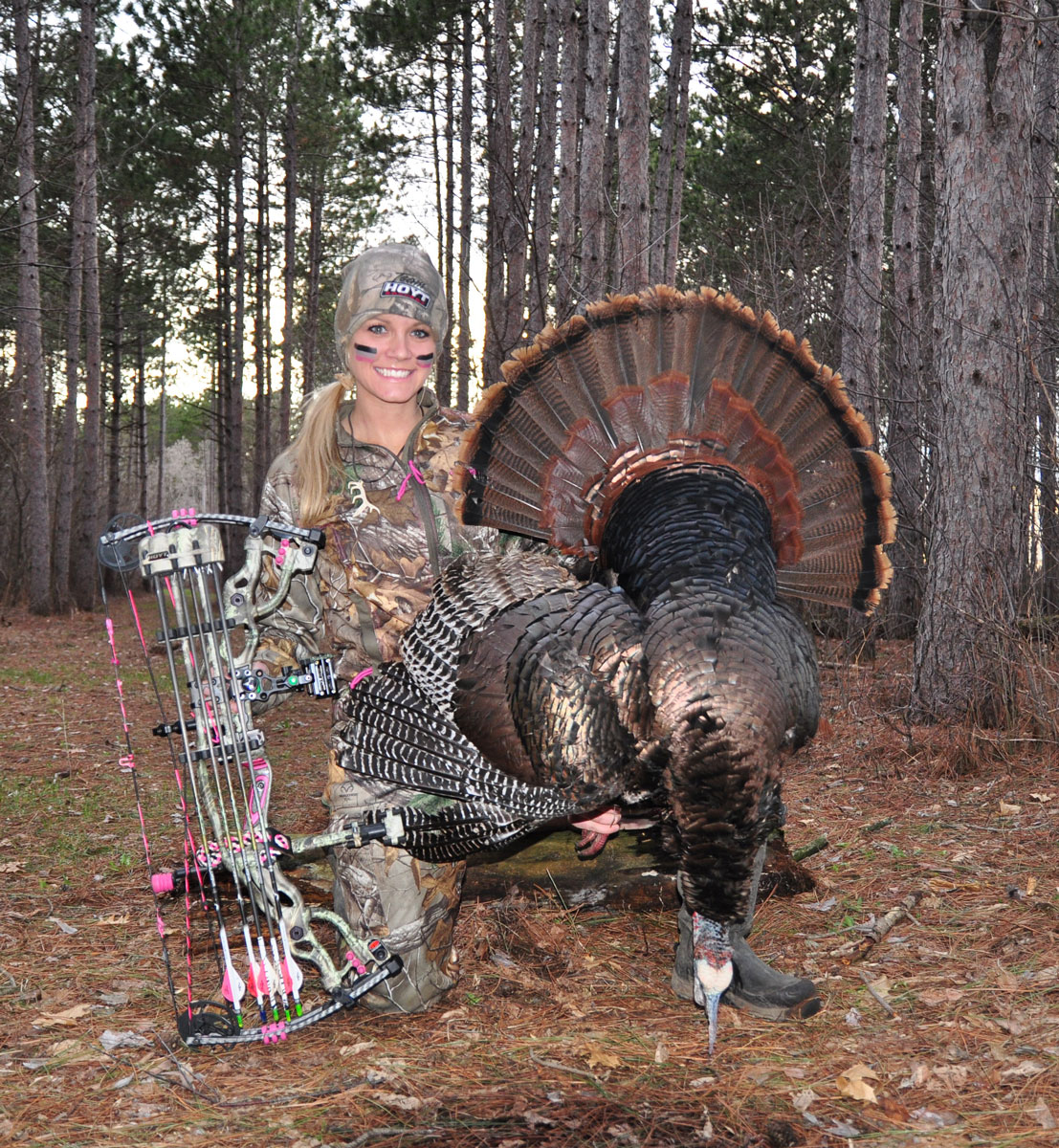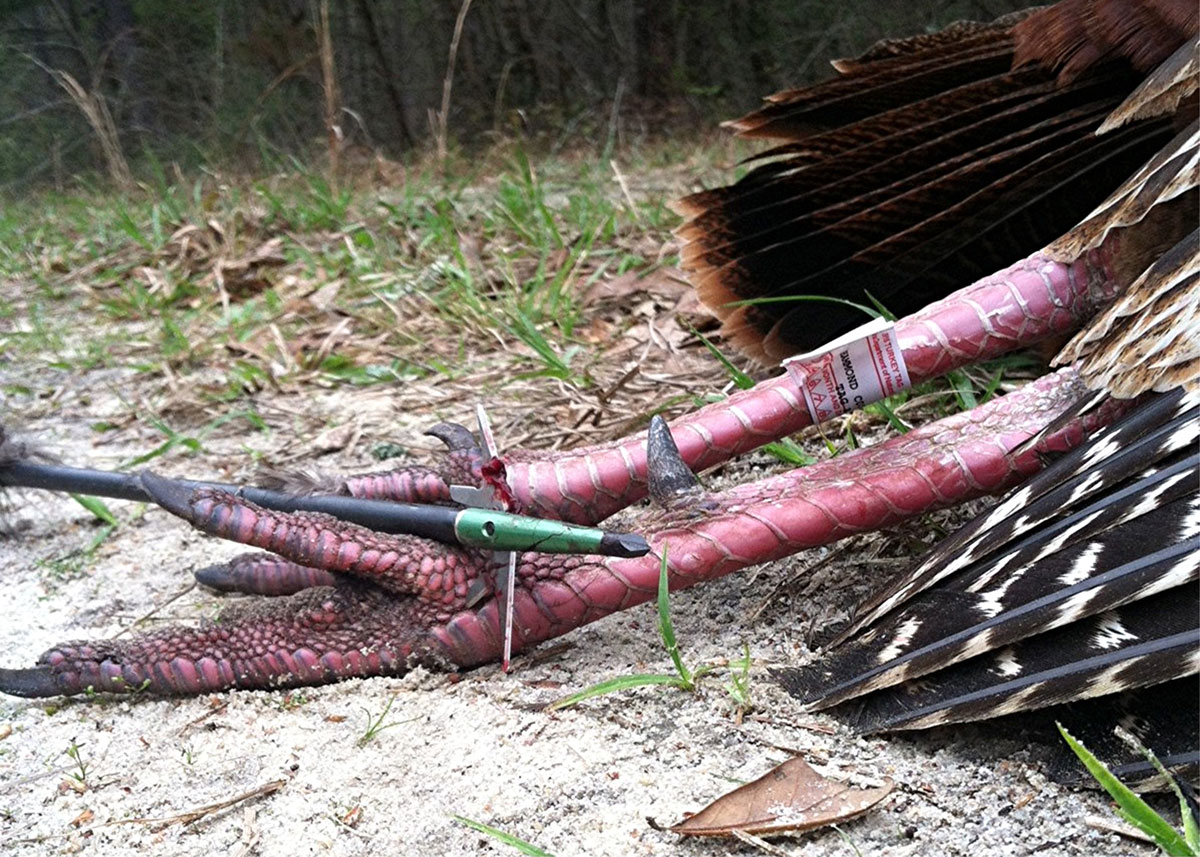
Don’t discount your chances of taking a Carolinas turkey with archery equipment. It might be tough, but follow this long-time hunter’s tips and you might tag a tom with a broadhead and bow.
A question that most everyone asks Scott Hammond of Charleston, S.C., when they see him packing up his turkey hunting gear in the parking lot of the Haddrell’s Point tackle shop he manages is, “Where’s your shotgun?”
Hammond just smiles, holds up his bow and heads for his truck. His explanation is that he has been more than blessed with hunting opportunities and has taken more than his share of wild turkeys with firearms.
“Upping the ante, upping the challenge,” Hammond said. “I was fortunate to grow up hunting and have killed lots of birds and gotten to travel to different states to hunt. Bowhunting, for me, is just trying to enjoy the experience a little bit more, making it a little bit more personal. It’s the same reason some people fly-fish instead of using conventional fishing tackle.”
Using a stick and a string to tackle turkey takes a lot more planning than walking into the woods with a shotgun slung over your shoulder. Because it’s tough to conceal the movement involved in drawing his bow, Hammond must scout how and where birds move on the land he intends to hunt and pattern them almost to the exact steps they’ll be taking.
“I’ll pattern my turkeys early and get to know their travel movements, because the first week or two of the season is when those gobblers are still henned up and with large packs of hens, (and) they will stick to the same travel pattern throughout the day,” he said.
“If I’ve done my scouting and planning properly, I should be able to have a bow shot about 8:15 on opening morning in March from a particular blind I have in mind.”
Other than archery tackle, Hammond heavily relies on two pieces of gear to help him get close enough to a gobbler to take a shot. The first is a blind, which may be of permanent construction involving natural materials or a pop-up blind he carries into the woods the morning of the hunt — or possibly the night before.
“On my personal farm, a place I’m going to hunt multiple times, I put permanent blinds out a month in advance,” he said. “If I have roosted a bird the night before, like say on the edge of a big agricultural field, I have taken a blind in at midnight, set it up on the edge of the field, and successfully harvested that gobbler the next morning.”

Hammond prefers — especially early in the season when birds are ganged up in flocks — is similar to the way he hunts deer in the fall. He gets into a stand before daylight, and that’s where he hunts for most of the day.
“If I am very confident the turkeys are coming through this area, if I’ve done my homework and … I know the preferred travel routes, I’ll sit four or five hours in a blind, just lightly calling every 15 to 30 minutes,” he said.
The second piece of gear is a decoy. While he may be certain a gobbler is going to travel this way, very few “certainties” exist in turkey hunting, so he uses the power of suggestion by deploying rubber social media.
“I love a semi-strut jake decoy,” said Hammond. “Make sure the decoy is facing you, because that mature tom is going to come in and go for the face of the offending bird. That puts his back end toward you, which gives you the best opportunity to draw as well as the best kill shot with an arrow: right down the anal vent.”
Hammond uses the same bow for turkeys and deer, and he makes very few adjustments, right down to using the same broadhead.
“If you’re shooting 70-pound draw weight at deer, I recommend backing it down a bit; anything over 45 pounds is sufficient” he said. “Having enough kinetic energy is not going to be an issue on turkey. You never know how long you might be stuck at full draw before he gives you a good shot, so you don’t want to be straining against all that draw. Gobblers are very tough birds, but you’re not going to have a problem with penetration.
For all the debate over which broadhead to use for turkey, Hammond also sticks to the same brand and model he uses during deer season.
“I use the exact same broadhead for turkey that I use for deer: a 100-grain Swhacker mechanical broadhead,” he said. “Like any kind of hunting, shot placement is the key. I want to make a good, clean kill shot. If that big gobbler dares turn his back on me, he’s gonna get it, right where the sun don’t shine.”




Be the first to comment